Overview of plant growth regulators for greenhouse production
Plant growth regulators (PGRs) applied to greenhouse crops can suppress or promote growth, increase branching, or promote or delay flowering. Here is an overview of each PGR active ingredient and their attributes.

To produce high-quality compact flowering plants proportional to container size, growers can use non-chemical and chemical methods. This article will provide an overview of the chemical plant growth regulators (PGRs) that are available to either suppress or promote growth, increasing branching, or promote or delay flowering (see overview table of PGRs for greenhouse production).
Ancymidol
Ancymidol can be applied to bedding plants, bulbs, chrysanthemums, Easter lilies, plugs, poinsettias and foliage plants. Most notably, it is safe for bedding plant plugs because of the reduced risk of phytotoxicity. Ancymidol can be applied as a foliar spray or substrate drench to control plant height, specifically internode elongation, thus resulting in compact plants. Ancymidol foliar spray or substrate drench solution should be agitated to continuously suspend the chemical in solution resulting in uniform distribution. Reduced efficacy may occur at increased temperatures, therefore, increased ancymidol concentration rates may be required. At higher application rates, phytotoxicity can occur as necrotic (brown, dead) spots. Vigorous plants may also require increased ancymidol concentration rates or multiple low ancymidol concentration applications. If very high ancymidol concentration rates are required, consider evaluating the use of a stronger PGR such as paclobutrazol, flurprimidol or uniconazole to improve results and cost effectiveness.
Benzyladenine (BA)
Benzyladenine (BA) can be applied to bedding plants, Christmas cactus (Schlumbergera sp.), coneflower (Echinacea sp.), herbaceous perennials, hosta (Hosta sp.) and other containerized annuals and tropical plants. Benzyladenine can be applied as a foliar spray or as a substrate drench to increase lateral branching and flowering and to control plant height. Complete coverage is required because BA has limited mobility in the plant.
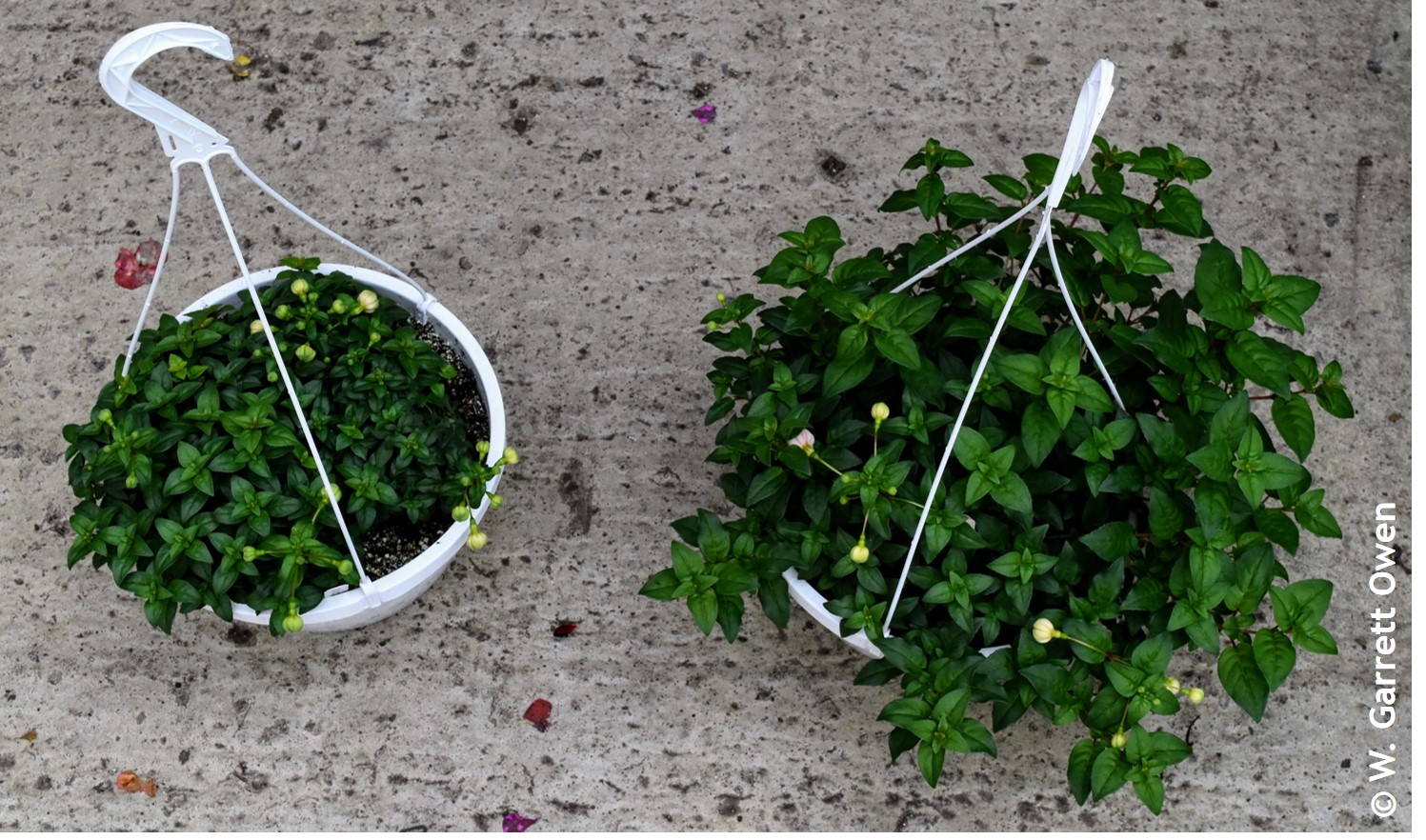
Chlormequat chloride
Chlormequat chloride can be applied to azaleas, bedding plants, geraniums, hibiscus, poinsettias, osteospermum and to other herbaceous and woody plants. Chlormequat chloride can be applied as a foliar spray or substrate drench to control plant height, thus resulting in compact plants. Applications have the greatest affect at the beginning of rapid stem elongation. Foliar spray applications often result in phytotoxic chlorosis (yellowing) development (Fig. 1); however, these symptoms will usually be covered by new growth. Although registered for use as a drench, it is not a cost-effective control option.
Daminozide
Daminozide can be applied to azaleas, bedding plants, chrysanthemums, gardenias, hydrangeas, poinsettias and to other flowering and foliage plants except lilies. Daminozide should only be applied as a foliar spray to control plant height, specifically internode elongation, thus resulting in compact plants. Substrate applications are tied-up by organic matter in the substrate. Notably, daminozide is highly effective to control bedding plant plug height and is most effective in cooler climates, such as Michigan.
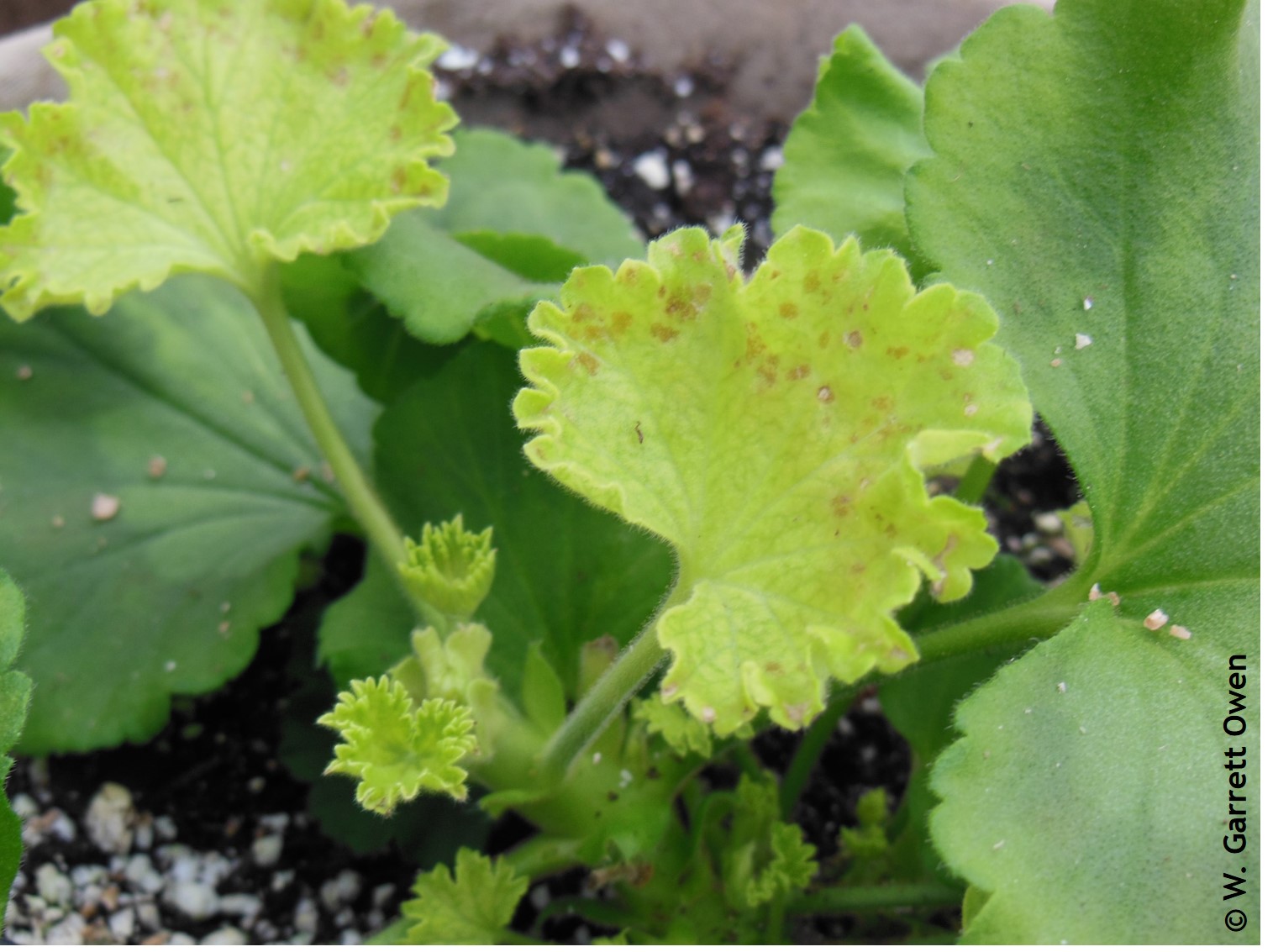
Dikegulac sodium
Dikegulac sodium can be applied to azaleas, Elatior begonias, bougainvillea, clerodendron, fuchsia, gardenia, geranium, lantana, verbena and other tropical flowering and foliage plants. Dikegulac sodium can be applied as a foliar spray or substrate drench and promotes lateral branching (Fig. 2). Dikegulac sodium foliar spray or substrate drench solution should be agitated to continuously suspend the chemical in solution resulting in uniform distribution. Phytotoxicity and distorted growth (Fig. 3) can occur. Therefore, before application, consider the market date and the time required for new growth to develop.
Ethephon
Ethephon can be applied to azaleas, chrysanthemums, geraniums, lantana, petunia and verbena varieties to increase lateral branching; control height and stem topple in bulb crops, specifically, Hyacinths and Narcissus; and delay flowering or abscise (abort) flower buds. Ethephon is only registered for foliar spray applications. Slight phytotoxic chlorosis (yellowing) may occur. Use protective eye-wear when measuring and mixing this chemical.
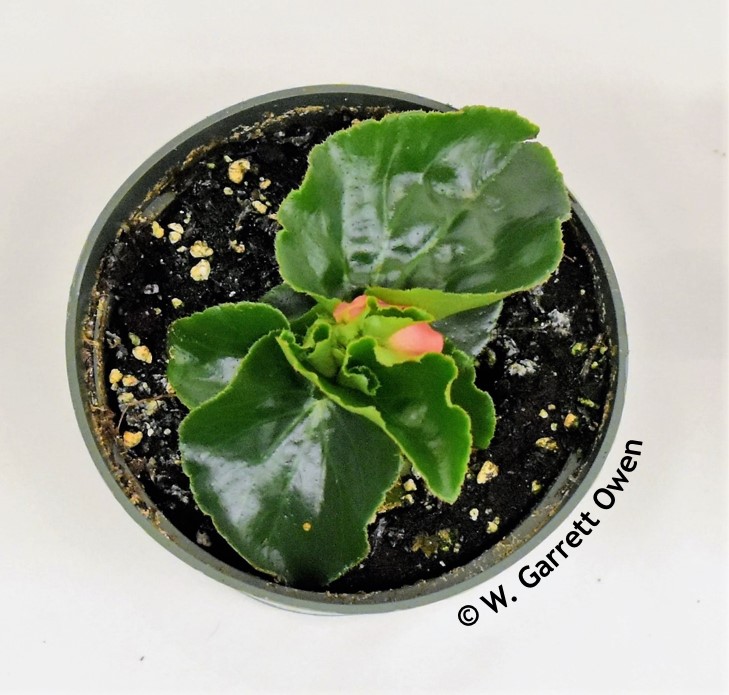
Flurprimidol
Flurprimidol can be applied to bedding plants and plugs, bulb crops, chrysanthemums, geranium, poinsettias, herbaceous perennials and other flowering and foliage plants. Flurprimidol can be applied as a foliar spray or substrate drench to control plant height, thus resulting in compact plants. Note, flurprimidol applications are not recommended for use on fiberous begonia (Begonia × semperflorens-cultorum; Fig. 4). Vinca (Cathanrantus roesus) may develop black leaf spotting (Fig. 5) as a result of foliar spray application with a high concentration of flurprimidol and at high temperatures.
Gibberellins
Gibberellin such as GA3 can be applied azalea, chrysanthemums, fuchsia, geraniums, lantana and poinsettias to produce tree forms (Fig. 6). Gibberellin is often applied as a foliar spray. It can be used to promote growth and to overcome overdose of plant growth suppressing PGRs.
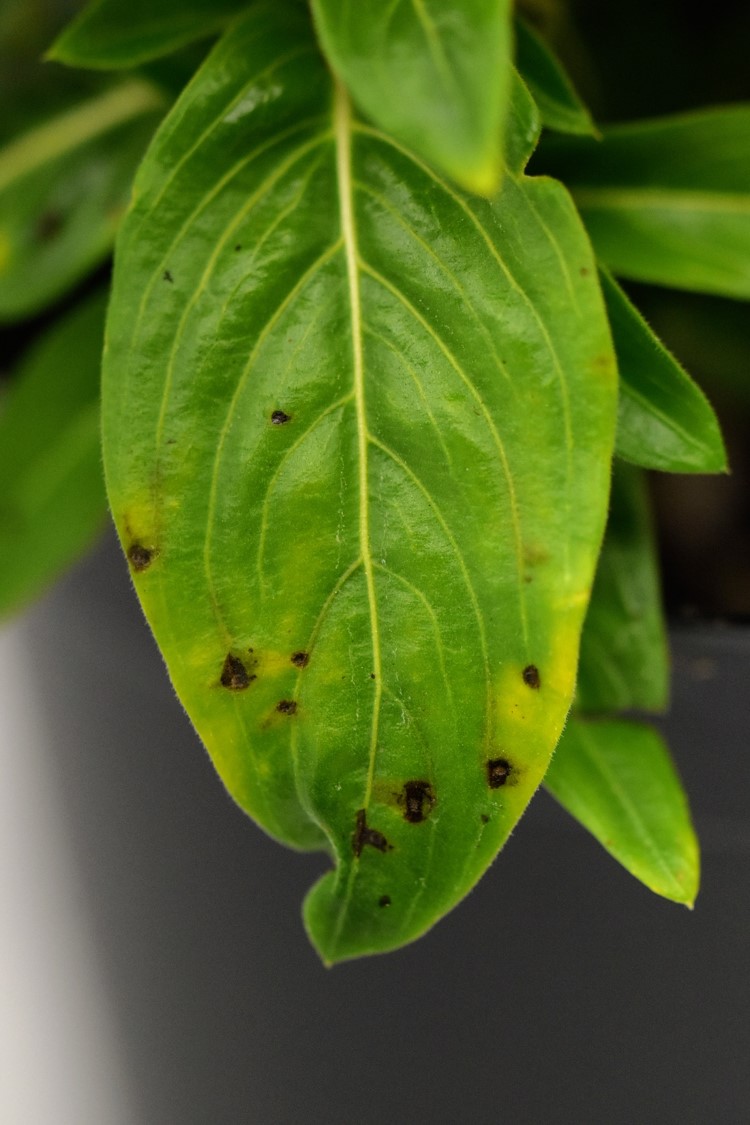
Paclobutrazol
Paclobutrazol can be applied to bedding plants, bulb crops, flowering and foliage crops, and herbaceous perennial and woody ornamental plants. Paclobutrazol can be applied as a foliar spray or substrate drench to control plant height and width, thus resulting in compact plants (Fig. 7). Foliar spray applications should be applied heavy enough to contact the stem of the plant as this chemical readily translocated via the xylem from one plant part to another (it has limited phloem movement out of the leaves). For substrate drenches, paclobutrazol can be applied at a single high concentration or as multiple low concentration applications. It is important to note that this chemical is highly effective at low concentrations and persists longer than most PGRs.
Uniconazole
Uniconazole can be applied to bedding plants, bulb crops, chrysanthemums, Easter lilies, geraniums, poinsettias and other herbaceous and woody plants. Uniconazole is most commonly used on herbaceous perennials. Uniconazole can be applied as a foliar spray, substrate drench, pre-plant bulb dip, and as liner/cutting dip, thereby controlling plant height, specifically internode elongation, thus resulting in compact plants. It is one of the most chemically active PGRs and growers should conduct in-house trials to determine optimal rates for their location.
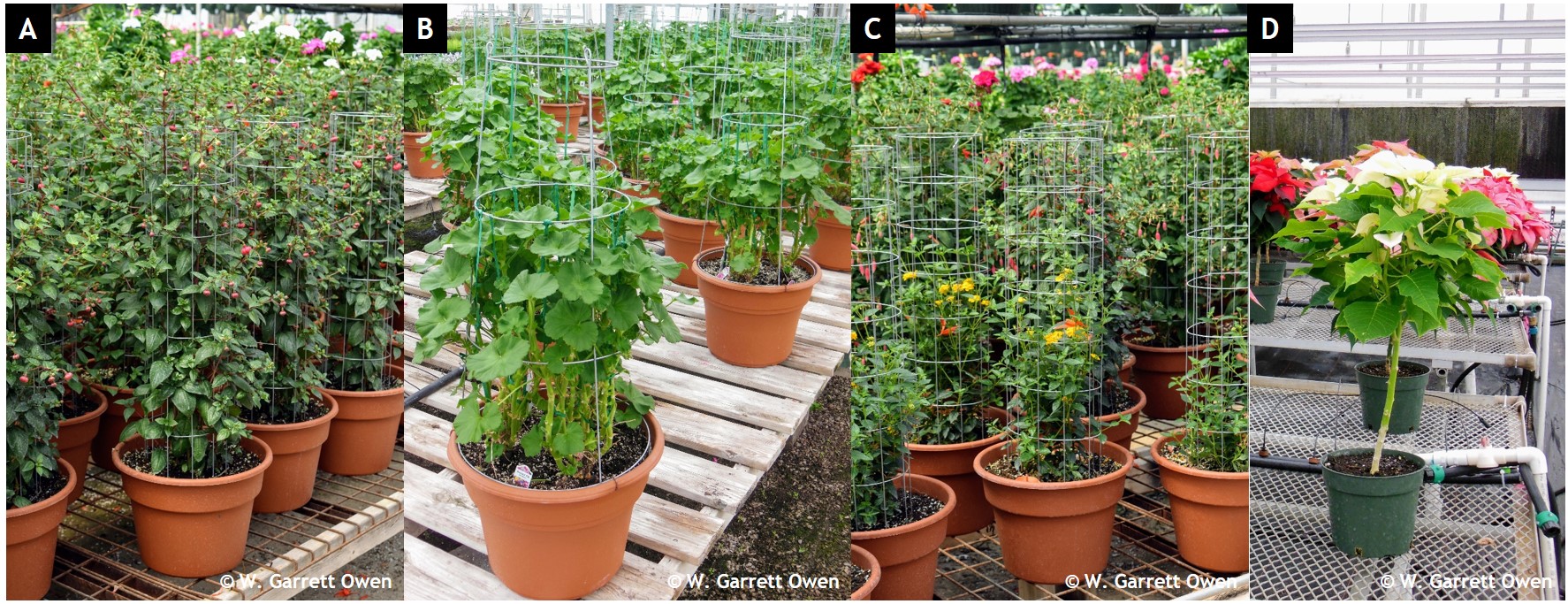
Benzyladenine (BA) + gibberellin (GA) combinations: BA+GA4+7
The combination of benzyladenine + gibberellin such as BA+GA4+7 can be applied to Asiatic, Easter and LA lilies to avoid of reduce lower leaf chlorosis and leaf drop. Additionally, it can prolong flower life of potted lilies. This combination of chemicals can also be applied to geranium cuttings after stick to reduce lower leaf chlorosis to poinsettias to promote or increase bract expansion. This combination of chemicals can be applied as a foliar spray or substrate drench. It is the preferred option to use to promote growth and to overcome overdose of plant growth suppressing PGRs.

Fundamentals of PGR applications and reminders
Prior to handling any chemical, Michigan State University Extension recommends to always read and follow the label, be familiar with MSDS sheet(s) for health hazards and know the personal protective equipment (PPE) requirements. When mixing any chemical, wear protective eyewear, gloves, long sleeve shirts and close-toed shoes.
You should conduct an in-house trial for first time chemical use or if a species is not listed. Additionally, you can contact the PGR manufacture or your greenhouse educator or outreach specialist to obtain more information or address questions.
Remember that PGR applications will vary with species and cultivar grown, chemical applied, concentration and application timing. Only mix enough chemical that is needed and can be applied the same day. Applications should not be made to drought (water) stressed plants. For foliar spray applications, ensure the foliage is dry before application. For substrate drench applications, ensure the substrate is moist (moisture level 3), but not wet (moisture level 5). If one use sub-irrigation, reduce PGR drench concentration rate. Substrate components such as pine bark may reduce the efficacy of PGR drenches.
For more information about PGRs and annual bedding plants, refer to the 2019-20 Plant Growth Regulators for Annuals guide by Brian Whipker, North Carolina State. For perennials, refer to the 2018-19 Growth Regulators for Containerized Herbaceous Perennial Plants guide by Joyce Latimer, Virginia Tech.
Need help mixing PGRs? The PGRMix Master created by e-GRO (Electronic Grower Resources Online), a collaborative effort of floriculture specialists, and Fine-Americas, Inc. can assist you in mastering all your PGR needs.
Overall, if you are not using PGRs to assist you with producing high-quality plants, consider this article as an overview to the available PGRs.



 Print
Print Email
Email

